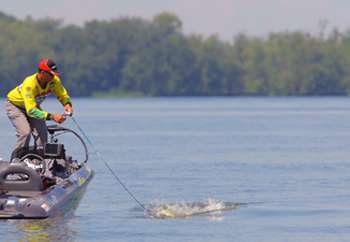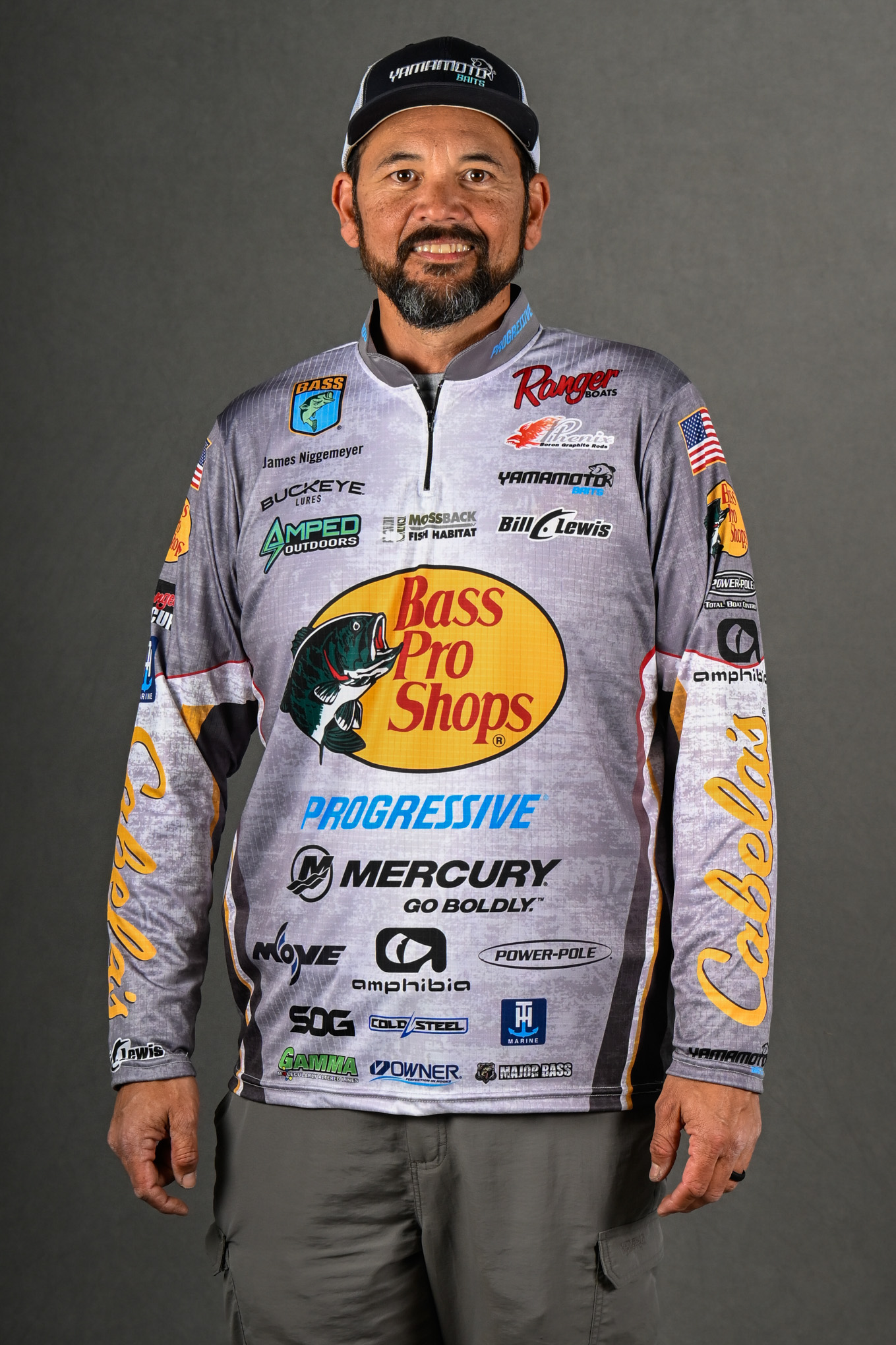
Last week I covered one of my favorite shallow water patterns for summer bass. This week I want to talk about going deep.
Many anglers have trouble when it comes to finding and catching deep-water bass. If you'll follow these tips closely, I think you'll have success no matter where you fish.
My deep-water pattern starts with the right gear. We're going to be fishing a big plastic worm, and for that I like a St. Croix Legend Tournament series "Spinnerbait Sweeper" rod. Don't get hung up on the name. Just because it's called a spinnerbait rod doesn't mean it isn't a great worm rod, too. It's a 7-foot, medium-heavy action rod that really does a great job with this technique.
My reel is an Ardent XS1000 spooled with Sunline Shooter Fluorocarbon in 12- to 16-pound test, depending on water clarity and the cover I'm fishing. My favorite hook is a 4/0 offset, round bend XPoint and I usually have a 3/8-ounce sinker on the rig. Sometimes I'll go lighter, and I might go as heavy as 3/4 ounce if I want a faster fall to create a reaction bite. Tungsten sinkers are nice and offer great feel, but there's nothing wrong with lead, especially in the lighter weights.
My favorite plastic worm for this technique is a 10-inch Strike King Thumper in plum, junebug or blue fleck. Plum is my favorite all-around color, but I like junebug if it's dark or overcast and blue fleck if it's bright and clear.
The 10-inch Thumper (it also comes in a 7-inch version) works in other seasons, too, but it's especially strong during the dog days. Plus, it catches all sizes of bass — from 12 inchers to lunkers.
What makes this pattern so strong in the summer is that bass are schooled on deep structure. When you find one, you've usually found a bunch, and that creates competition for forage and your lure, which is always good.
The most productive depth at this time of year seems to be between 10 and 30 feet deep. I look for what I call the "activity zone" by watching my electronics as I drive around the lake. I'm looking for concentrations of bass or baitfish. They might be in 15 feet or they could be in 25 feet, but wherever that activity zone is, that's where I concentrate. I look for places where structure — points, humps, channels — intersects the zone.
Once I've found structure within the zone, it's time to start fishing. I like to make long casts past the structure — into shallower water — and fish the big worm all the way back and into deeper water. The reason I do this is to cover lots of water and zero-in on the level the fish are holding and feeding.
When it comes to working the bait, I'm very thorough, dragging it slowly along so I can learn more about the bottom. I want to feel what's different down there. When my bait meets a stump, some grass, a shellbed or anything different, I immediately slow down and shake it or try to give it some action without pulling it away from that spot. That's the time when you're most likely to get a strike.
As with most good bass patterns, this one has some details that make it much more productive. Here are a few little things that can make a big difference:
See Part 1: Shallow »
If you'll try my summertime one-two punch on your favorite bass waters, I can't guarantee a knockout, but you'll definitely catch some fish. These patterns work from coast to coast and border to border.
- Scent can help you get more bites. I like to use BioEdge in shad or shiner because those are the baitfish the bass are most likely to be feeding on at this time. A good scent will not only increase the number of bites you get, but the bass that hit are going to hold onto the bait longer so you have plenty of time to set the hook.
- Speaking of setting the hook, I usually set the hook as soon as I feel a strike, but not with the big Texas rigged Thumper. I get more and better hook-ups if I wait until the rod loads or the line tightens before setting the hook. I think it's because the bait's so big that they don't always get all of it right away.
- In clear water, I like to modify the Thumper. If you take a close look at it, you'll see a dotted line in the tail section. When the water's clear, you can make the bait more subtle and attractive by cutting that section off. The bait will sort of shimmy, then. I'll do the same thing after I've caught a few on the unaltered bait and the action slows. The new look will sometimes get the fish biting again.





